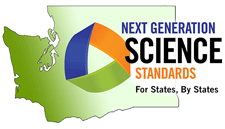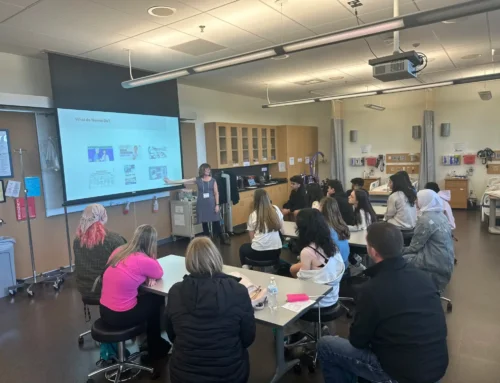 I have heard a lot of questions lately about “alignment” to the Next Generation Science Standards (NGSS/WSSLS). These questions range from, “is such-and-such aligned?” to, “we’ve written our own curriculum and we want to do some gap analysis to see what’s missing.”
I have heard a lot of questions lately about “alignment” to the Next Generation Science Standards (NGSS/WSSLS). These questions range from, “is such-and-such aligned?” to, “we’ve written our own curriculum and we want to do some gap analysis to see what’s missing.”
The growing interested in the NGSS/WSSLS genuinely excites me. But I find myself explaining that for NGSS, the familiar phrases ‘alignment’ and ‘gap analysis’ are not entirely helpful terms. Frankly, one can lay out the NGSS standards and check that every science and engineering practice, every disciplinary core idea, and every crosscutting concept (the three dimensions of NGSS) are present in a year and still fail to have something close to reflecting the NGSS vision of science and engineering learning. It can be a difficult conversation; and one that requires a lot of professional development about our new standards and their foundational pieces. It can be a frustrating conversation for people who have invested significant time and energy into adapting or creating their own materials that don’t really match the NGSS. And it can be an uncomfortable — or even scary — conversation for someone who sees the timeline for upcoming assessments changes and who is looking for a miracle product that ‘does NGSS’ for them.
It’s important to know that the first phase of ‘alignment’ to the NGSS involves instructional alignment by implementing the three dimensions intentionally in classrooms to actively engage students in working and thinking like scientists. But the second phase of ‘alignment’ to the NGSS involves integrating the dimensions into “three-dimensional instruction.” Three-dimensional instruction centers not around content (as our previous standards did), but around students engaged actively as scientists who are wrestling with explaining a phenomenon, or as engineers who are grappling with designing solutions to a problem. Like scientist and engineers, students in an NGSS ‘aligned’ lesson are using the content (and the practices, and the crosscutting concepts). This focus on explaining a phenomenon or designing a solution to a problem is so important that it is the first criteria in the Science EQuIP Rubric and is the driving understanding in the first part of the PEEC document for evaluating instructional materials.
Whoa! Let that sink in for a moment. REALLY let that sink in!
It’s quite a paradigm shift, eh? What’s more, it speaks directly to the nature of NGSS as embodying deeper learning through a context similar to project-based or problem-based learning. And – you guessed it — you just can’t buy that.
Forgive this rhyme, but at this time of year, it’s hard to get out of my head:
It comes without with ribbons!
It comes without tags!
It comes without packages, boxes, or bags!
We’ve analyzed and aligned till our brains all were sore.
Then we thought of something we hadn’t before.
Maybe NGSS, we thought, doesn’t come from a publishor.
Maybe NGSS, perhaps, means a whole lot more!”
Joe Krajcik recently wrote an article for the November 2015 NSTA High School journal, The Science Teacher. In it, he does a very nice job explaining what three-dimensional instruction means and I think many people will find his piece illuminating. At the time of this writing, his article is available on NSTA’s website.
Regional Science Coordinators across the state are available and excited to help districts and teachers begin the deep learning necessary to transition to the WSSLS/NGSS. Here at NWESD, that person is Brian MacNevin.



